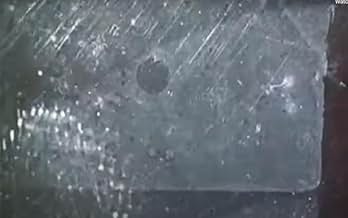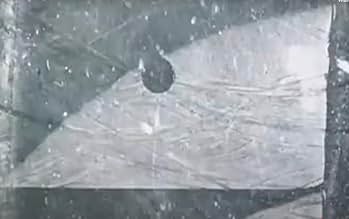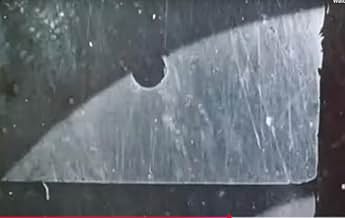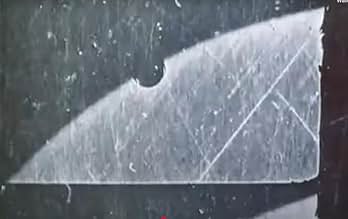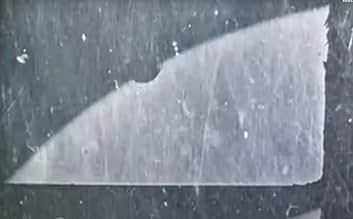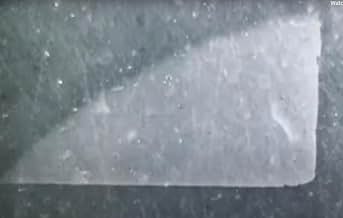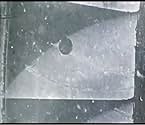Passage de Venus
- 1874
- 1min
VALUTAZIONE IMDb
6,8/10
2395
LA TUA VALUTAZIONE
Cronofotografia primordiale del transito di Venere del 1874, catturata da Jules Janssen in Giappone usando il suo "fucile fotografico" per la ricerca scientifica.Cronofotografia primordiale del transito di Venere del 1874, catturata da Jules Janssen in Giappone usando il suo "fucile fotografico" per la ricerca scientifica.Cronofotografia primordiale del transito di Venere del 1874, catturata da Jules Janssen in Giappone usando il suo "fucile fotografico" per la ricerca scientifica.
- Regia
Recensioni in evidenza
This is the oldest thing listed on the entire IMDb. I'm glad to have discovered this neat trick where you can literally look at any submission on the entire website. You just type in a keyword and then get rid of the check in the box. This website has literally 5.3 million entries! It's quite nice to get to see the first one. I believe "Roundhay Garden Scene" was technically the first movie ever made.
This is actually a series of photographs, so it probably doesn't count as a movie. It's only 5 seconds long, but it's great to see history in motion! Of course, it's very low quality. I imagine this would be in the public domain so it shouldn't be hard to find. Weird when I make a review longer than the actual entry! I'm sure you have time to see this. ***
This is actually a series of photographs, so it probably doesn't count as a movie. It's only 5 seconds long, but it's great to see history in motion! Of course, it's very low quality. I imagine this would be in the public domain so it shouldn't be hard to find. Weird when I make a review longer than the actual entry! I'm sure you have time to see this. ***
OR IS IT?
It is true that this is the very first sequential photographic series put to motion ever produced, there is an elephant in the room that needs to be addressed. The tragedy is that this is not actually the heavenly body of Venus passing before the great burning day ball in the sky. It is in fact, the world's first screen test, as these are only models, placeholders made to test the plates which would be used for the real deal. Regrettably, the actual footage of the Venusian transit may be lost forever. According to Wikipedia, "A 2005 study of the surviving material concluded that all the extant plates made with the photographic revolver are practice plates shot with a model and that none of the many plates successfully exposed during the eclipse seem to have survived."
Yet we must interpret it as it is: A film. Indeed, it is fitting that man's first foray into something so invariably groundbreaking in influence, cultural impact and importance to art as film is indeed, baby steps, waddling up towards the stars. Or at least, the pretend ones spinning above the nascent medium's crib in its nursery. If we play along with this vision, we cannot help but be in awe of man's great scope for this technology's use, to chart astrological and scientific phenomena, to revolutionize the preservation of once in a lifetime events, and indeed attain near-apotheosis in achieving the ability to preserve, simulate and replay life itself as long as the powers and mediums employed would hold. It is staggering in and of itself that this alone survived into the age where it could be immortalized nearly forever, to inspire every generation with proof that even in simulacra, man has always been driven to achievement by gazing upon the wonders within the stars.
It is true that this is the very first sequential photographic series put to motion ever produced, there is an elephant in the room that needs to be addressed. The tragedy is that this is not actually the heavenly body of Venus passing before the great burning day ball in the sky. It is in fact, the world's first screen test, as these are only models, placeholders made to test the plates which would be used for the real deal. Regrettably, the actual footage of the Venusian transit may be lost forever. According to Wikipedia, "A 2005 study of the surviving material concluded that all the extant plates made with the photographic revolver are practice plates shot with a model and that none of the many plates successfully exposed during the eclipse seem to have survived."
Yet we must interpret it as it is: A film. Indeed, it is fitting that man's first foray into something so invariably groundbreaking in influence, cultural impact and importance to art as film is indeed, baby steps, waddling up towards the stars. Or at least, the pretend ones spinning above the nascent medium's crib in its nursery. If we play along with this vision, we cannot help but be in awe of man's great scope for this technology's use, to chart astrological and scientific phenomena, to revolutionize the preservation of once in a lifetime events, and indeed attain near-apotheosis in achieving the ability to preserve, simulate and replay life itself as long as the powers and mediums employed would hold. It is staggering in and of itself that this alone survived into the age where it could be immortalized nearly forever, to inspire every generation with proof that even in simulacra, man has always been driven to achievement by gazing upon the wonders within the stars.
This hits hard
the way venus transits across the sun just hits very different nowadays and i can't believe that this was only 5 seconds and deserves to be way longer.
the way venus transits across the sun just hits very different nowadays and i can't believe that this was only 5 seconds and deserves to be way longer.
Though it barely constitutes as a film, 'The Passage to Venus' is likely the earliest film in cinema history. No, not the earliest film of any particular genre or method, but just the first FILM in general. As for what it contains, there's not much to it. You might as well read the IMDb description and that is pretty much it. It's only about six seconds long, the quality of even the finest print of this film is low and hard to see, which is natural considering the film's extraordinary age. However, how impossibly important this film really is makes up for the less than compelling actual contents of the film, as it really enhances the awe inspiring quality this film would otherwise never inspire.
This is probably the oldest film on IMDB.
Whether this is a film or not, it's hard to say, as this is 6 seconds of images put together. This technique may have been performed before by other men, but this is the oldest record we have. The initial intentions were not to catch movement for its own sake, but multiple shots were required because you were unable to specify the exact time of the Venus passing in the sky. It still makes me think, though, how far we have come 145 years later. It brings a combination of joy and sadness to see these images, it makes me wonder what was that day in Jules Janssen's mind. When listening to Alexander Graham Bell capturing his own voice, projecting to the future, this set of pictures makes you feel like history was made on that very day.
Lo sapevi?
- QuizThe oldest movie listed on IMDb.
- ConnessioniFeatured in The Origins of Scientific Cinematography: The Pioneers (1990)
I più visti
Accedi per valutare e creare un elenco di titoli salvati per ottenere consigli personalizzati
Dettagli
- Data di uscita
- Paese di origine
- Lingua
- Celebre anche come
- Transit of Venus
- Luoghi delle riprese
- Giappone(entire film)
- Vedi altri crediti dell’azienda su IMDbPro
- Tempo di esecuzione1 minuto
- Colore
- Mix di suoni
- Proporzioni
- 1.33 : 1
Contribuisci a questa pagina
Suggerisci una modifica o aggiungi i contenuti mancanti

Divario superiore
By what name was Passage de Venus (1874) officially released in Japan in Japanese?
Rispondi
